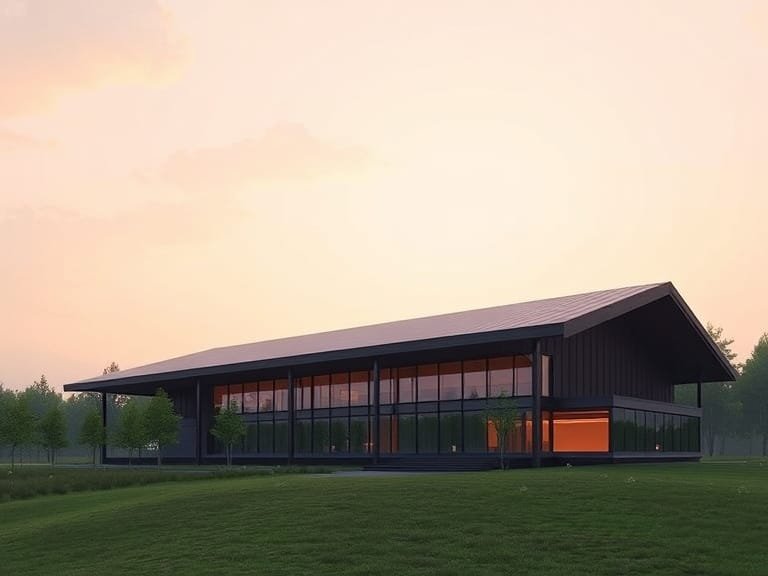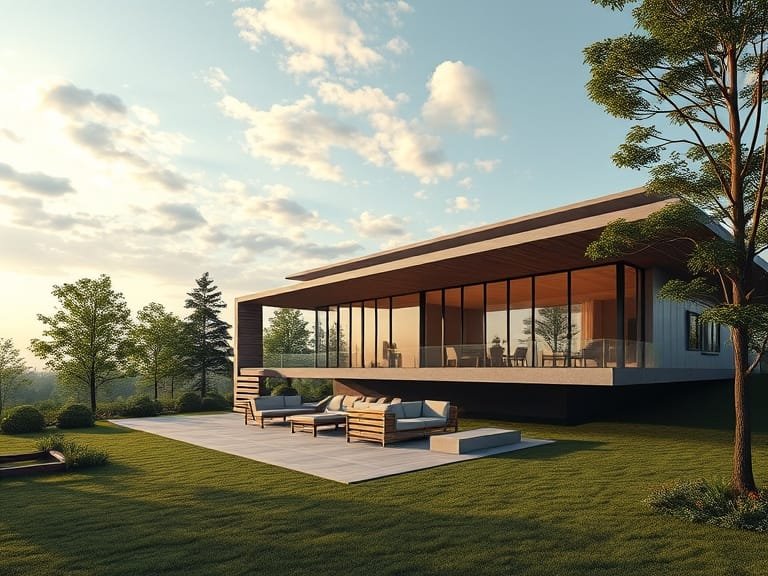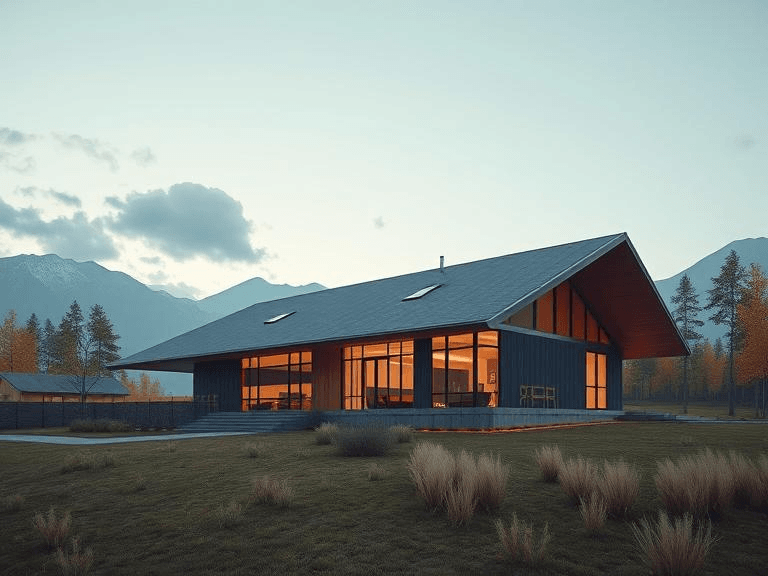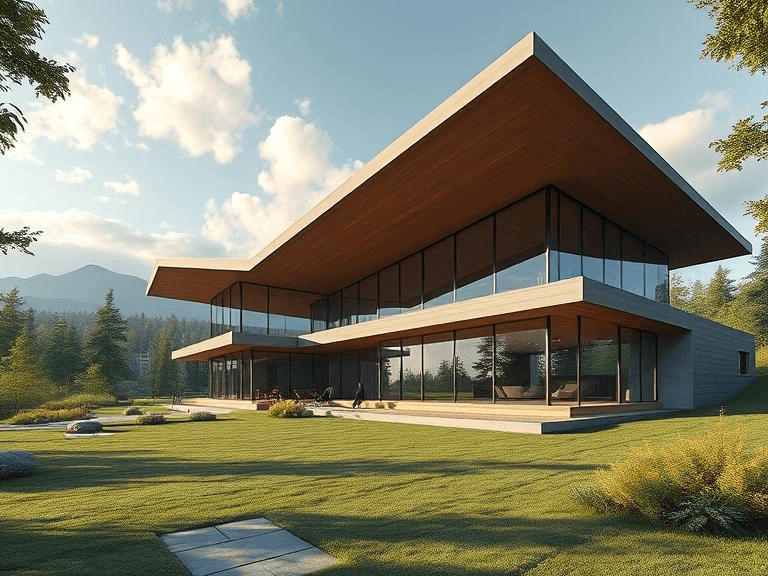
When embarking on a roofing project, it is vital to understand the various types of roofs available and their unique characteristics. Each roof type offers distinct advantages and disadvantages, influencing both aesthetic appeal and functional performance. A few popular options include gable, hip, flat, and shed roofs.
The gable roof, characterized by its triangular shape, is one of the most common designs. It effectively allows for water drainage, making it an excellent choice in areas prone to heavy rainfall or snowfall. Additionally, gable roofs provide extra space for an attic, which can be beneficial for storage or living space. However, they are susceptible to high winds and may require additional bracing in storm-prone regions.
In contrast, hip roofs have slopes on all four sides, providing a stable structure. This roof type is advantageous in windy or snowy environments, as it can easily shed water and snow. Hip roofs also have a unique aesthetic appeal, often enhancing the overall curb appeal of a property. On the downside, they can be more complex and expensive to construct compared to gable roofs.
Flat roofs, while not entirely horizontal, offer a minimal slope that permits the collection of water. This design is often favored in modern architecture due to its clean lines and ease of integration with other building features. However, flat roofs can face challenges in drainage, making the choice of roofing materials crucial to avoid leaks and water accumulation.
Shed roofs, reminiscent of a single sloped roof structure, present a practical and budget-friendly option. They are typically used in structures like sheds or extensions. Shed roofs allow for easier water runoff and can be less expensive to construct. Nevertheless, they may not provide the same aesthetic appeal or durability as other roof types.
Ultimately, choosing the right roof type and material is essential for successful roof construction. It is crucial to consider local climate conditions, aesthetic preferences, and budget constraints when making this decision. Selecting the appropriate roofing material that aligns with the structure’s design can significantly enhance functionality and longevity.
Choosing the Right Roofing Materials
When embarking on a roof construction project, selecting the appropriate roofing materials is crucial for ensuring durability, insulation, and aesthetic appeal. Each material comes with its advantages and disadvantages, making it essential for homeowners to thoroughly evaluate their options. One commonly used material is asphalt shingles, known for their affordability and ease of installation. They typically offer a reasonable lifespan of 20 to 30 years and provide good insulation properties, making them a popular choice for many residential roofs.
Another option to consider is metal roofing. This material is renowned for its longevity, often lasting 50 years or more. Metal roofs are highly resistant to inclement weather, including heavy snowfall and strong winds. Furthermore, they reflect heat, which can contribute to energy efficiency and lower heating costs. However, they may require a higher initial investment compared to asphalt shingles, which can impact budget considerations.
Tile roofing, often made from clay or concrete, is another excellent choice for residential constructions, particularly in areas with significant heat exposure. These materials are not only visually appealing but also offer exceptional durability, often lasting upwards of 50 years. Their inherent thermal mass can help regulate temperature within the home; however, tile roofs are heavier and may necessitate additional structural support.
Wood shingles or shakes present a more rustic aesthetic and can enhance curb appeal. Made from cedar, redwood, or pine, they can last around 30 years but require regular maintenance to prevent rot and insect damage. Additionally, wood may pose a fire hazard in some areas, making it essential to check local building codes before choosing this option.
In conclusion, it is imperative to weigh the distinctive features of each material when opting for roofing solutions. Choosing the right roofing materials will not only contribute to the functional performance of the roof but also influence the overall appearance of the home, solidifying its value for years to come.
Planning and Design Considerations
Effective planning and design are paramount to ensure successful roof construction. Before embarking on this critical project, homeowners should begin by establishing a comprehensive budget that accommodates all aspects of the construction process. This budget should encompass costs related to materials, labor, permits, and any unexpected repairs. A well-thought-out financial plan can prevent overruns and ensure that the project proceeds smoothly without financial strain.
In addition to budgeting, it is advisable to seek professional help, particularly for complex roof designs or if you are unfamiliar with the technical aspects of roof construction. Hiring an experienced contractor can not only provide insights into best practices but can also ensure that the work complies with local building codes and regulations. Such expertise can be vital in avoiding common pitfalls that may compromise the roof’s integrity and lifespan.
Moreover, obtaining the necessary permits is a crucial step before initiating construction. Local regulations often require permits for roofing projects to ensure compliance with safety and structural standards. Failure to secure these permits can lead to fines or enforced removal of work, adversely affecting the overall project timeline and costs.
Equally important are the design elements of the roof. Factors such as roof slope, drainage systems, and ventilation should be thoughtfully considered during the planning phase. An appropriate roof slope can ensure effective water drainage, preventing potential pooling and subsequent water damage. Additionally, ventilation plays a vital role in promoting air circulation, which can help regulate indoor temperatures and extend the roof’s lifespan by reducing heat buildup. Achieving a balance between functionality and aesthetics through proper planning and design is one of the essential tips for successful roof construction that cannot be overlooked.

Working with Experienced Contractors
When undertaking a roofing project, one of the most critical steps is hiring experienced contractors. Qualified roofing professionals bring invaluable expertise to the table, not only ensuring the work is done correctly but also simplifying the construction process. A well-constructed roof is crucial for the protection and longevity of a building, making the choice of contractor paramount. To begin with, it is essential to select reputable contractors who have a proven track record of delivering high-quality work.
One effective way to find experienced roofing contractors is through referrals from friends, family, or neighbors who have recently completed similar projects. Online platforms and review websites also provide insights into contractors’ past performances. After compiling a list of potential contractors, the next step is to verify their licenses and insurance. Licensing ensures that the contractor adheres to local regulations, while insurance protects you from liabilities in case of accidents or damages occurring during the construction process.
Checking references is another vital practice. Reputable contractors will gladly provide a list of past clients who can offer feedback on their experience, including the quality of work and ability to meet deadlines. Additionally, effective communication is pivotal throughout the project. Clear discussions about expectations, timelines, and any specific design wants can significantly reduce misunderstandings that might arise during construction.
Collaborating with experienced roofing contractors not only enhances the likelihood of a successful outcome but also fosters a smoother construction experience. By taking these essential tips into account, homeowners will be better prepared to navigate their roofing projects efficiently and effectively, ultimately leading to a successful roof construction that meets all of their needs.
Weather Considerations and Timing
When embarking on a roof construction project, understanding the impact of weather conditions is crucial for achieving a successful outcome. Varied climates can significantly influence both the timing and methodology of roof construction. It is essential to consider factors such as temperature, precipitation, wind speed, and humidity, as they directly affect the materials used and the safety of the workers involved.
In temperate regions, spring and early fall are typically the best times for roofing projects. During these seasons, mild temperatures and reduced precipitation create favorable working conditions. Conversely, roofing work during extreme heat in summer or freezing conditions in winter can lead to issues such as material damage, reduced adhesion, and worker safety hazards. Contractors should be vigilant and plan their projects to avoid these adverse conditions.
In coastal areas, where storms and hurricanes are prevalent, it is critical to monitor weather forecasts closely. Not only does this advice reduce the risk of work interruptions, but it can also inform decisions regarding when to begin or continue roofing projects. For areas prone to heavy snowfall, winter months should generally be avoided unless proper precautionary measures are in place. Effective protection for both workers and materials is vital, including the use of tarps and secure scaffolding to safeguard against unforeseen weather events.
Recognizing the signs that indicate the need for repairs is equally essential. Warning signs such as leaks, curling shingles, or uneven surfaces should prompt immediate evaluation before construction begins. Adopting these essential tips for successful roof construction can mitigate complications during the project and extend the longevity of the roof. It is advisable for all involved in roof construction to remain acutely aware of weather patterns and anticipate potential impacts throughout the entire process.
Safety Precautions During Construction
When undertaking a roof construction project, prioritizing safety is essential for both contractors and homeowners. This commitment not only protects the individuals involved but also ensures that the construction site remains accident-free. One of the primary safety measures to implement is the use of appropriate safety gear. Hard hats, safety goggles, and non-slip footwear are vital to protect workers from potential hazards. Additionally, harnesses and lanyards should be employed whenever work involves heights to prevent falls.
Securing tools and materials is another critical safety tip that should not be overlooked. Loose tools and materials can lead to serious accidents if not managed properly. It is advisable to store tools in a designated area when not in use and to ensure that materials are stacked securely and away from the edges of the roof. This organization not only helps in reducing the risk of injury from falling objects but also fosters a more efficient work environment.
Moreover, it is imperative that all workers follow industry-standard safety protocols. Regular safety meetings and training can significantly enhance awareness of risks associated with roof construction. Workers should be encouraged to communicate any unsafe conditions they observe, fostering a culture of safety that benefits everyone on-site. This collective approach ensures that all participants in the construction process are vigilant and prepared to respond to potential dangers, thus reinforcing the overall safety of the operation.
By adhering to these essential tips for successful roof construction, the chances of accidents and injuries can be markedly reduced. Consistent implementation of these safety measures will ultimately create a safer environment, contributing to the successful completion of the roofing project while safeguarding the well-being of all involved.
Regular Maintenance and Inspection
One of the most important aspects of ensuring the longevity and durability of a roof is regular maintenance and inspections. Homeowners should prioritize these practices to identify potential issues before they escalate into costly repairs. Regular inspections can be conducted seasonally, but especially after severe weather events, as the impact of storms can damage roofing materials without immediate visibility.
To facilitate effective inspections, homeowners can use a checklist highlighting critical areas to examine. This list should include checking for missing or damaged shingles, signs of water pooling or leakage in the roof structure, and ensuring that gutters are free from debris. Inspecting flashing around chimneys and vents is also crucial, as compromised flashing can lead to serious water damage over time. Furthermore, taking note of any granules collected in gutters can indicate shingle wear and necessitate further inspection of the roofing surface.
The frequency of these inspections is paramount. It is generally advisable to conduct thorough assessments at least twice a year—once in the spring and once in the fall. Additionally, after any significant storm, an inspection should be performed to determine the integrity of the roof and to swiftly address any damage. Keeping meticulous records of these inspections and maintenance can also assist in tracking the roof’s condition over the years.
Different roofing materials may have unique maintenance requirements. For instance, asphalt shingles may require less frequent inspections than metal roofing, which may be more susceptible to rust and corrosion. Understanding the specific needs of your roofing material can guide you in executing the essential tips for successful roof construction and can significantly extend the life of the roof while minimizing repair costs.
Sustainable Roofing Options
As the demand for environmentally responsible building practices increases, sustainable roofing options have gained significant attention. Among these options, green roofs, solar panels, and recyclable materials stand out as viable elements to consider for any roof construction project. Embracing these eco-friendly methods can align with the essential tips for successful roof construction, providing both aesthetic value and functional benefits.
Green roofs, or living roofs, involve planting vegetation over a waterproofing membrane. These roofs can enhance climate control, improve stormwater management, and promote biodiversity by creating a habitat for various species. Furthermore, they can reduce energy costs by providing natural insulation, thus contributing to a building’s overall energy efficiency. As sustainable roofing technologies develop, green roofs continue to showcase their potential to significantly reduce the environmental impact of traditional roofing methods.
Another option to explore is the integration of solar panels. By harnessing solar energy, these systems can convert sunlight into electricity, leading to substantial savings while promoting sustainability. Solar panels contribute to energy independence and can be tailored to fit various roof designs. Additionally, many government incentives are available to offset the initial installation costs, making solar energy a financially appealing aspect of roof construction.
Utilizing recyclable materials for roofing is also a prudent choice. Materials such as metal, slate, and certain types of asphalt can often be repurposed or recycled at the end of their life cycle, reducing landfill waste. Choosing recyclable roofing materials can also diminish the overall carbon footprint associated with the production and disposal of conventional roofing materials.
In conclusion, incorporating sustainable roofing options not only aligns with the essential tips for successful roof construction but also fosters long-term benefits, including energy efficiency, reduced environmental impact, and potential cost savings over time. It is advisable for builders and homeowners alike to prioritize these eco-friendly solutions as they undertake roofing projects. By doing so, they contribute to a greener future while enhancing the overall performance of their structures.
Legal Considerations and Warranties
When undertaking a roof construction project, it is imperative to be aware of the legal considerations and requirements that govern such undertakings. The first step in this regard is to secure all necessary permits. Most jurisdictions require homeowners to obtain building permits prior to commencing roof work. These permits ensure that the construction adheres to local regulations and standards, ultimately protecting the integrity of the building and the safety of its occupants.
In addition to permits, compliance with building codes is crucial for successful roof construction. Building codes vary by region but typically outline specific standards for materials and construction practices. It is advisable to familiarize oneself with these regulations, as failure to comply can result in significant fines or the need to redo work that does not adhere to code. Moreover, an inspection will likely be required at various stages of the project, which confirms that the construction meets the mandated safety and quality standards.
Furthermore, understanding warranty terms is essential when selecting roofing materials and hiring contractors. Most roofing materials come with warranties that protect against premature failure, while labor warranties guarantee that the work will be performed according to the agreed standards. It is crucial to carefully read these warranty documents, paying attention to the conditions that might void them. In some cases, neglecting routine maintenance or modifications can result in the loss of coverage.
To maintain a secure investment in your roofing project, awareness of legal obligations and warranty terms cannot be overstated. These essential tips for successful roof construction will guide homeowners in minimizing future disputes and ensuring a smooth construction process. By prioritizing compliance and understanding warranty protections, homeowners can achieve peace of mind with their roofing efforts.


